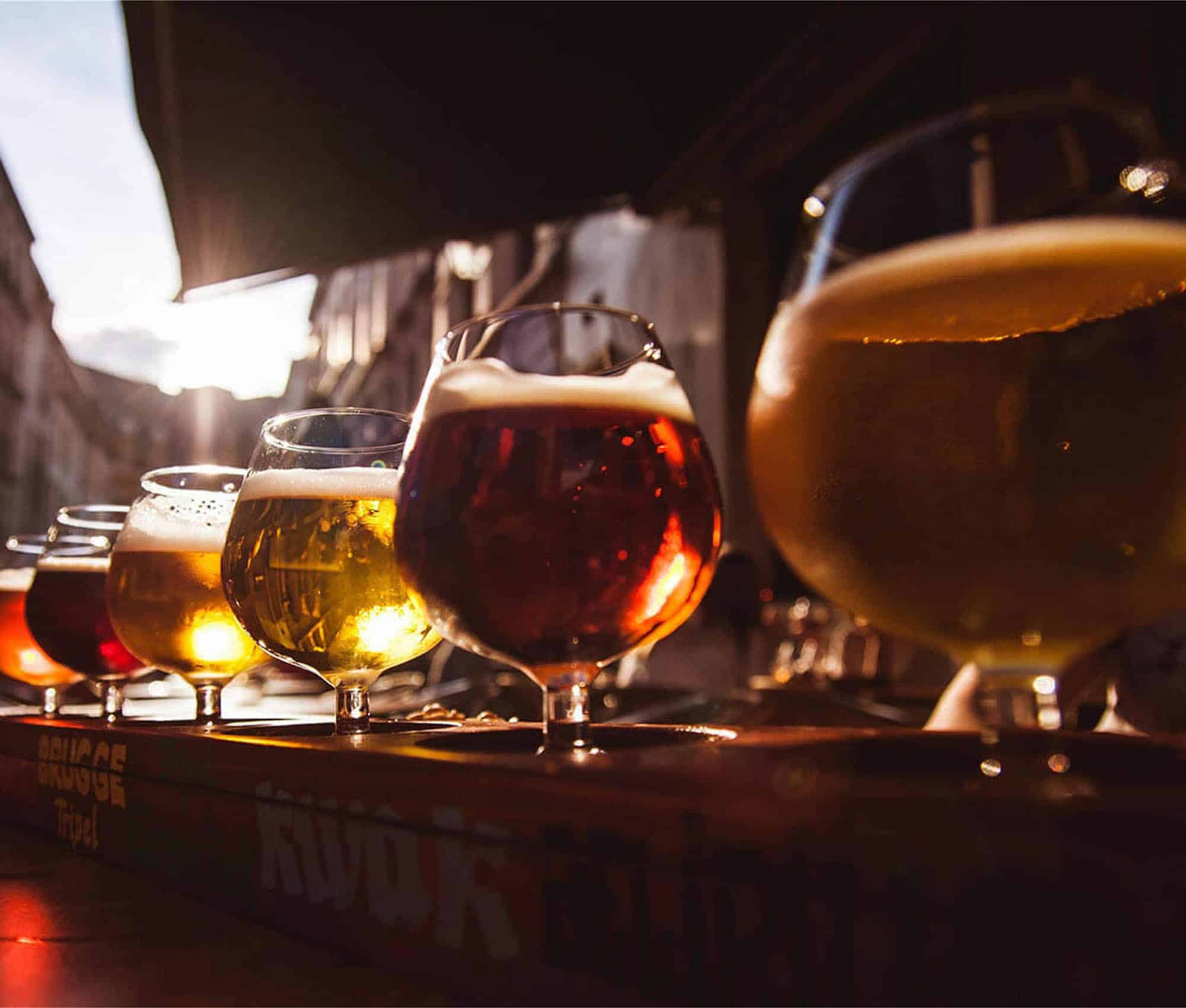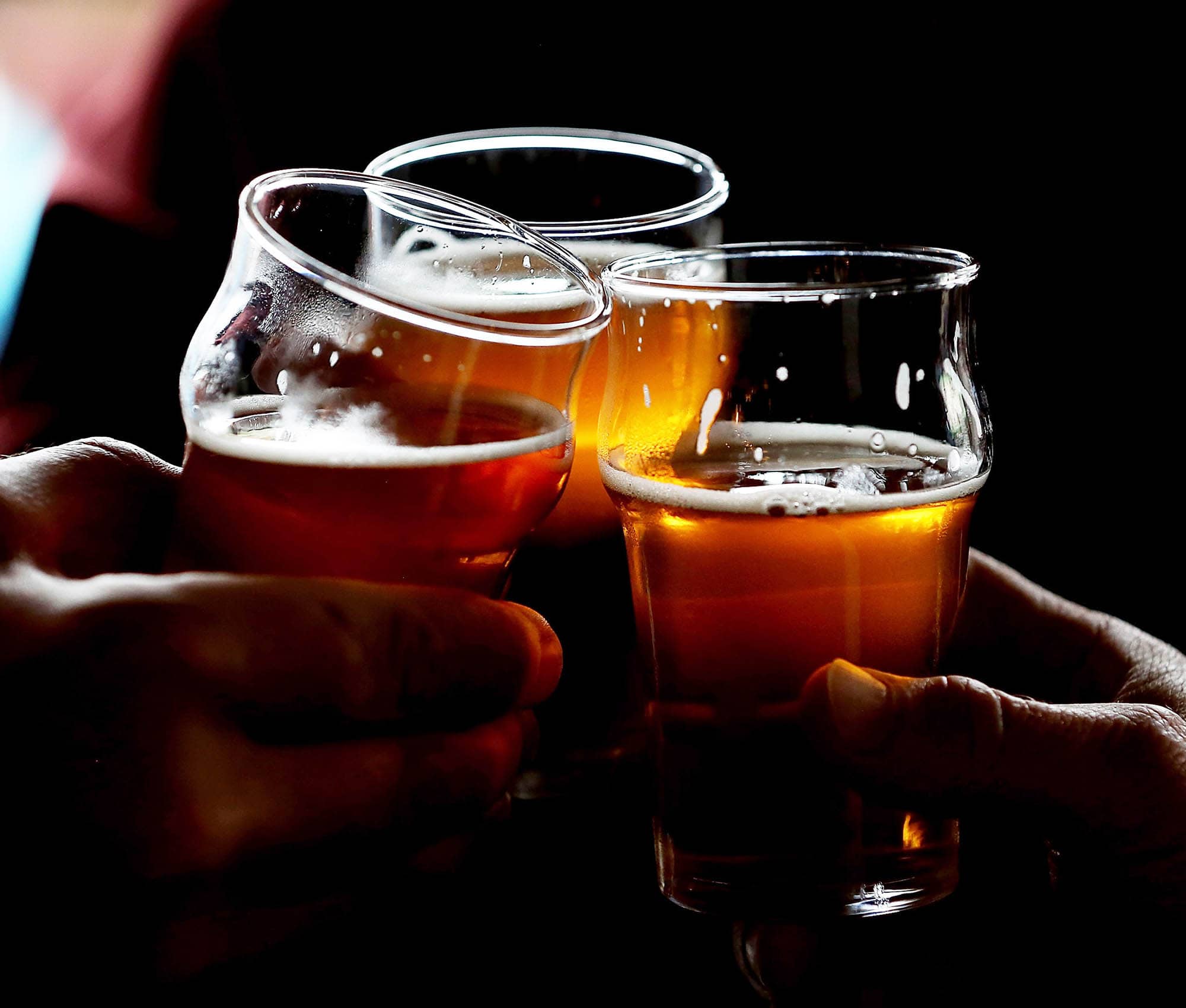What is The Difference Between Craft Beer and Industrial Beer?
What is the Difference Between Craft Beer & Industrial Beer?
If you are interested in finding out what are the differences between a craft beer and a commercially made, mass produced industrial beer, you’re in the right place!
First up, we need to understand exactly what beer is:
- Beer is the third most popular drink in the world, after water and tea
- Beer is the number one most popular alcoholic drink
- The history of beer production is very old – dating back to Babylonian time over 6,000 years ago
In 1516 CE, Germany enacted the Beer Law. It stipulated that beer could only be brewed using water, malt, hops, and yeast as ingredients. These famous four basic raw ingredients are used to produce the beer we know and love so much today.
What Is Craft Beer?
Craft beer is the earliest type of beer of which we know. It was made long before industrialization and mass production took over. The United States is the modern day birthplace of craft beer as we find it today. The Brewers Association has strictly defined what it takes to be considered a craft beer. This actually makes the definition of craft beer much easier!
Craft Beer Has the Following Characteristics
- An annual output of no more than 6 million barrels of beer per year
- Less than 25% of the shares of the brewery can be controlled by non-craft breweries
- The beer itself is at least one of the main products of the brewery, or accounting for more than 50% of sales
- No use of supplementation in the making of the product
- No artificial additives or flavorings
How is Craft Beer Made?
Craft beer production requires a fair amount of TLC and time. Firstly, you need to crush the malt to extract the starch inside. Then, the grain mix is steeped in hot water in order to the starch to begin to convert into sugars. If you don’t have sugar, the beer won’t develop alcohol compounds.
Next thing to add are the hops. Then, more water is added and the malt, hops, and water simmer together in a vat. By cooking the hops alongside the starch-released sugars, when the yeast is added it has a lovely mix of sugary particles to start converting into alcohol.
Craft beer has a much richer taste than commercial or industrial produced beer because of the malt. Craft beer malt can contain wheat, but more often than not it’s barley that is the malt constituent. This is what gives craft beer its wonderful aromas of toast, warm oven-baked bread, and even biscuits.
The Main Differences Between Craft Beer and Industrial Beer Production
Don’t get us wrong – the world needs industrial scale beer production! How else can manufacturers keep prices accessible to budget conscious consumers otherwise? Also, don’t forget the huge amount of beer that is consumed every day. No craft beer producer could possibly keep up with global demand for this mega-popular drink.
While there is no doubt that artisanal beer is an art, it is this very exclusivity that makes it appeal to a different audience. Craft beer brewers create new beer recipes using ingredients such as mountain spring water, specially crushed and toasted malt, and even hops from hard to access organic hops producers! Conventional beer producers simply don’t have the time to tinker around like this.
Their objective is to make thousands of liters of beer to maximize income while keeping product prices down.
Location of Fermentation
Yeast can float above the beer mix during fermentation. The majority of top layer fermentations happens in craft beer.
Industrial beer yeast is fermented from the top to the bottom, with the main fermentation process being completed at the bottom. This means no one needs to control it all the time, which is perfect for large-scale beer production. Because industrial beer is clarified after fermentation, and not fully fermented, the production speed is much faster.
Temperature
The temperature during the fermentation of craft beer is between 16 to 26°C or 60 to 78°F. Because craft beer fermenters are usually small, the brewer is able to oversee this stage of beer production for high quality control and also to add that masterful observation.
The fermentation of industrial beer is set between 9 and 14°C or 48 to 57°F. Commercial and industrial beer fermenters are massive. This temperature setting is to speed up the fermentation process. The relatively cold fermentation settings used to make industrial beer inhibits the production of esters. This helps make the beer cleaner and smoother.
Yeasts
There are literally hundreds of different kinds of yeasts. There are top fermenting yeasts, such as the ones used in craft beers and bottom fermenting yeasts like the ones used commercially. The temperatures, length of time, and sugars react together and all have a hand in what the end product will taste like.
Raw Materials
Craft beer is made carefully using exclusive ingredients, most usually sourced locally. These raw materials are chosen using a rigorous selection process before being allowed to become part of the brewer’s recipe.
Production Area
Big industrial beer producers need massive spaces to house their fully automated factories. Hundreds of thousands of barrels of beer have to be manufactured, packed, and distributed every day. For all their homesick consumers who live overseas, industrial beer producers have to ensure their customers have access to their beer too.
Craft beer is most often produced in something called a microbrewery. These are small, compact breweries, often characterized by a few functions done by hand or semi-automated. The “human factor” is an essential component in craft beer production.
Fermentation
One of the key stages in the creation of beer, both craft beer and commercially produced beers have one fermentation stage, called the first fermentation. When the beer mix uses up all the CO2 , this stage is considered to be complete in industrial produced beer. Craft beers, however, add a second fermentation.
During the quieter secondary fermentation, the yeast gets to work on creating more complex taste and aroma compounds. The solids settle out of the beer mix, and the flavors mellow. This is when the green, harsh flavor of the beer transforms into a strong, grainy, well-balanced taste.
The Downside of Industrial Beers
Due to the massive scale of production, industrial beers have a different quality control. Premium ingredients and time have to take a back seat to the cost effectiveness of mass production. Only the cheapest ingredients are used:
- Isinglass – speeds up the natural sedimentation, but is actually extract of fish bladder!
- Sugar – corn starch or glucose
- Propylene glycol – anti-freezing agent used as a preservative
- Sulphites – naturally occurring in beer but can be added as a preservative
- Rice – cheap starch
- Vitamin C – used to reduce O2
- Flavorants
Many of the above listed ingredients are what cause the “hangover” feeling in beer drinkers the next day.
The Future of Beer Brewing
The differences between craft and industrial beer production means nothing to someone who has found the beer they love and can also happily afford it. Many people are turning to making their own beer in an effort to keep costs down and give themselves higher quality control. This is a great idea!
Learn more about microbreweries and how to purchase nano brewing equipment.
You can also leave a message and we will contact you soonest.
CONTACT US






